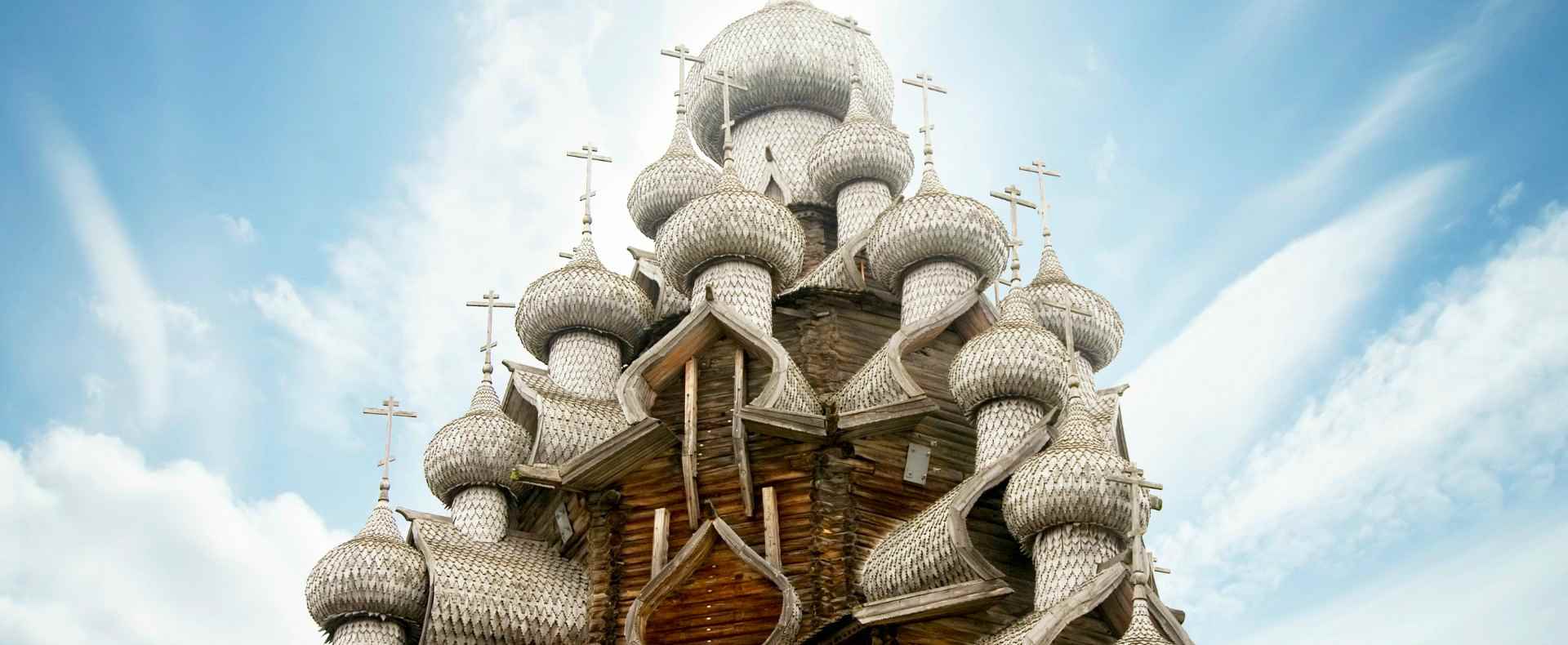Why Visit Russia's Kizhi Island
Standing on the banks of Lake Onega, Europe's second largest lake, Kizhi Island boasts one of the most extraordinary and unique ensembles of wooden architecture in Russia.
The territory of the island is believed to have been occupied since the 15th century, yet most inhabitants left their villages in the 1950s.
Today the whole island is occupied by a large open-air museum complex which encompasses over 80 historical wooden structures brought in the 1950s from different parts of the Karelia region to preserve the historic legacy of Russian wooden architecture.
About Kizhi church
The main architectural treasure of the island which has made it till today is the Kizhi Pogost - a UNESCO World Heritage Site. Its main highlight is the 22-dome Transfiguration Church. Built in 1714 from locally cut pine logs, the beauty was constructed without using a single nail. The neighboring winter church erected in 1764 and the 1862 bell tower form the complete picture of the magnificent place of worship.
Other buildings in the wooden "reserve" were restored and now display the traditions of genuine Russian architecture. The exhibits include the Church of the Resurrection of Lazarus dating back to the second half of the 14th century and brought from Murom Monastery. It is considered the oldest remaining wooden church in the country. A few bell towers, over 20 houses of peasants as well as old mills, barns, and saunas also supplement the Kizhi Island open-air museum collection.






